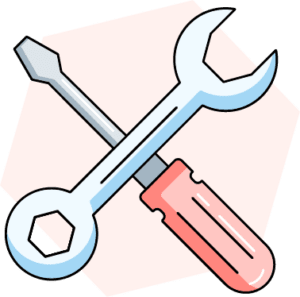In most cases, your homeowners insurance policy will cover your fence. Covered perils for your fence generally include fire, vandalism, storm damage, and more. All policies will have exclusions, so you must read through your specific policy for more details. The fence will be covered under other structures coverage and not as part of your dwelling limit.
Table of Contents
Protecting Your Property
Your homeowners insurance policy protects you against unexpected property damages or losses. Different types of coverage are included, including dwelling coverage and other structures coverage. Your home’s main structure, such as its walls and roof, is covered under the dwelling coverage for damage caused by covered perils such as fire or storms. You also have other structures coverage covering those not attached to your home.
Your fence could become damaged by a covered peril, such as a storm or fire, and need repair. In that situation, you could make a claim under your homeowners insurance’s other coverages section and be reimbursed for repair or replacement up to the designated limit.
How Does Homeowners Insurance Cover Fences?
The other structures coverage section on your homeowners insurance policy will typically be 10% of your dwelling limit. The dwelling limit is chosen when you purchase the policy and is usually the replacement cost of your home, which your agent will help you determine.
If your fence is damaged, the limit on your declarations page shown under other structures is the maximum amount you can receive for repair or replacement.
Fence Damage Coverage Limits
If your fence needs to be fixed, look at the other structures coverage to get an idea of how much you have. For example, if you have a dwelling limit of $500,000 and your policy sets other structures coverage at 10% of that value, you would have $50,000 for all other structures, including fences.
The $50,000 coverage applies not only to fences but also to all other structures on the property. It may not be sufficient in a significant weather event like a tornado to repair or replace all the damaged structures. Be sure to pay close attention to the limits on your policy, especially if you live in an area prone to severe weather events.
What Situations Are Covered by Homeowners Insurance?
As with any coverage on your homeowners insurance policy, there will be times when it will cover the damage and times when it will not. Your homeowners policy may cover fence damage repair or replacement in the following situations, depending on the policy:
- Fire, lightning, or vandalism
- Storm damage caused by high winds, hail, or falling trees
- Vehicle collisions on the property can cause accidental damage
- Riots and civil disturbances
- Snow or ice-related damage like weight
Ensure your homeowners insurance policy covers fence damage or replacement by reading it closely so you understand all of the inclusions and exclusions.
Non-Covered Situations
Now that you understand situations where your homeowners policy may cover fence damage, you should also know when it will not be covered. Here are some everyday situations in which homeowners insurance typically does not cover fence damage or replacement:
- Wear and tear
- Pest infestations, such as termites and rodents
- Earthquakes and floods (you usually need a separate policy for that)
- Intentional damage or negligence
- Lack of maintenance or improper maintenance that leads to damage
- The result of gradual deterioration or decay
- Regular maintenance or landscaping activities that cause damage
- Any other exclusions listed on your policy
Additional Coverage Options
An insurance policy can have riders, also known as endorsements, extend its coverage beyond what it typically covers. In addition to the standard coverage, riders add additional coverage to your policy when you need it.
- Earthquake Insurance: Earthquakes can cause significant damage, especially to fences. Earthquake insurance can be purchased as a rider or on a standalone policy. If you live in an area prone to earthquakes, consider adding this rider to your homeowner’s policy so that it can pay for fence damage.
- Flood Insurance: In addition to floods, storm surges and heavy rainfall can damage fences. Flood-related damages are often excluded from standard homeowners insurance policies. Flood damage to fences can be covered with a flood rider.
Tips for Preventing Fence Damage

There are some ways that you can prevent or limit fence damage. Consider taking the following steps to do so:
- Regular Inspections: Performing regular inspections of your fence can help you identify damage right away. Not only can this help you get it repaired quickly, but it can also prevent further damage down the road.
- Trim Vegetation: Branches or shrubs that have grown over fences can exert pressure, bending, warping, or even breaking them. Trimming vegetation near fence lines can alleviate this pressure and prevent unnecessary damage.
- Maintain Proper Drainage: Your fence can become rotted or decayed from excess moisture. Ensure you don’t have standing water that can affect your fence. Point downspouts away from it.
- Protect Against Soil Erosion: If you experience soil erosion, this can cause your fence to lean or collapse. Stabilize it by using retaining walls or ground cover.
- Avoid Soil Contact: It is a good idea to avoid your fence having contact with the soil by having a barrier in between to prevent excess moisture.
- Apply Protective Coatings: Stains, paints, or sealants can provide a barrier against moisture, UV rays, and other damaging elements. They enhance the fence’s durability and appearance, preventing rot, warping, and fading.
- Reinforce for Harsh Weather: If you live in an area with harsh weather, reinforce your fence when a storm may be coming. Cross-bracing the fence posts provides additional stability.
- Repair Promptly: Should your fence suffer any damage, repair it as soon as possible to prevent worsening.
Putting It Together
In most cases, your homeowners insurance covers fence damage under the other structures coverage, provided the fence is well maintained and whatever peril damage it is not excluded. For example, your insurance company will likely pay to repair a fence damaged by heavy rains. However, if termites infested your fence prior to the rain, they will likely exclude coverage. If you are worried about earthquakes or floods, you can add additional coverages to your policy via a rider. Remember to read your policy thoroughly and do what you can to prevent fence damage.
